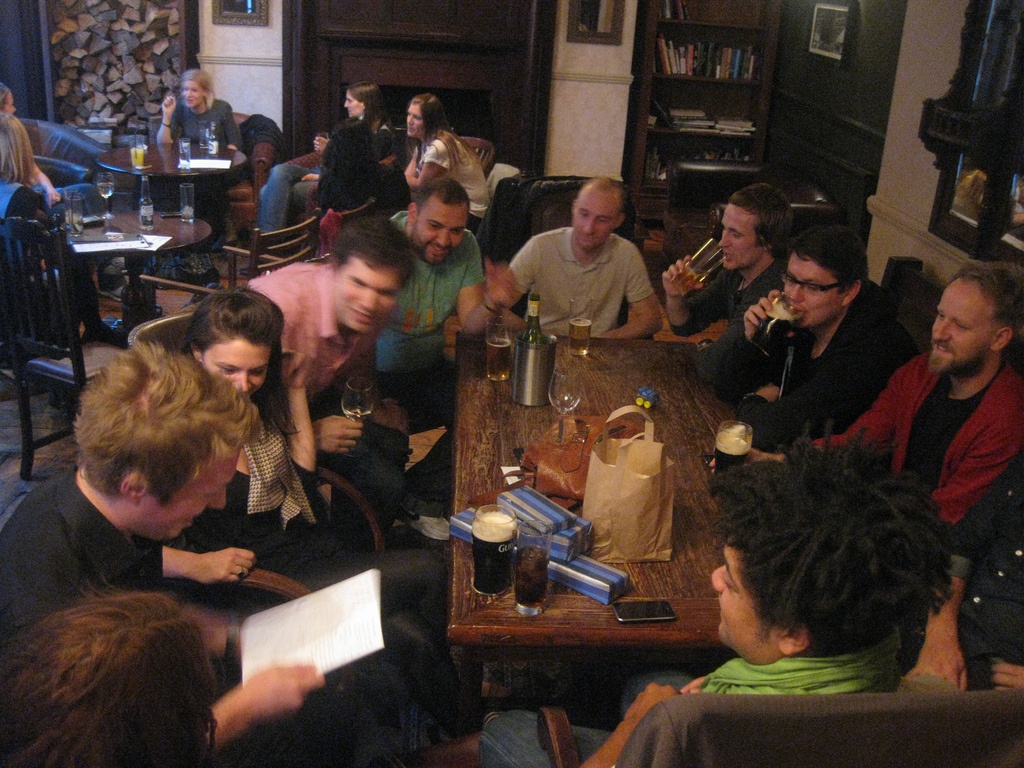Warning: Undefined array key "custom_image_width" in /misc/26/275/122/073/3/user/web/pianesi.com/wp-content/plugins/printfriendly/pf.php on line 1275
Warning: Undefined array key "custom_image_height" in /misc/26/275/122/073/3/user/web/pianesi.com/wp-content/plugins/printfriendly/pf.php on line 1276
How making observations and giving feedback can strengthen a group’s performance
If you want to help your team improve group dynamics and work more effectively, then observing how your group interacts is an important part of your role as a leader. Many of the behaviors that lead to poor dynamics — excessive deference to authority, blocking, groupthink, free riding, and evaluation apprehension — can be overcome if you catch them early.
To strengthen your team’s dynamic, it’s important to identify what is visible and explicit versus what is unspoken and implicit during discussions in the classroom. Often, what is left unsaid can prevent honest discussion about key elements of the issue being addressed.
By recognizing and identifying fears, beliefs, prejudices, organizational norms, habits, patterns, and cultural taboos that are constraining and limiting the discussion, you can improve both the effectiveness of the group and relationships among group members.
Below are a few questions to consider when making observations.
What are the social dynamics?
First, you need to understand the social dynamics of the group. When a group is newly formed, they are often a collection of strangers. Over time, they (hopefully) become a united group with common goals. If the group is in its forming stage, members are likely to be positive and polite. Roles and responsibilities aren’t yet clear.
Eventually, people start to push again the established boundaries and processes and conflict arises. Gradually, team members resolve their differences and begin to make progress.
It’s important to know your team and guide the development of your group. When observing the group, ask yourself these questions:
- Who speaks (and who doesn’t speak), when, about what, to whom, how often, and with what effect?
- How well is the group functioning? To what extent are participants contributing to building and harnessing the whole group versus advocating independent positions? Does the group move toward integration, homogeneity, or heterogeneity?
- What is the tendency of each group member with regard to inclusion, control, acknowledgement, or recognition of others, and how robust and direct are interactions? How fully are primary social needs met?
- How do participants respond to tension, expressions of feelings, acts of leadership, and differing viewpoints?
- Do individuals/the group as a whole fight or flee? Do individuals coalesce, acquiesce, react, or join in?
- Which mindsets are present—reflective, collaborative, worldly, analytic, action-oriented, or attentive—and are any dominant?
What are the political dynamics?
Next, you need to consider the political dynamics of the group. To improve team dynamics, it’s helpful to have clearly defined roles and responsibilities. If the team lacks focus and members are struggling to understand their role, morale and engagement are more likely to suffer.

By observing the political dynamics of the group, you can help the group resolve conflicts if they occur; provide support, especially to those team members who are less secure; and help people learn about different work styles and strengths. When observing the group, ask yourself these questions:
- How are authority and power being used? What is the relationship between facilitator and participants?
- How dependent or reactive are participants toward the instructor?
- What do you think are the untested assumptions in the group?
- Who is heated? Why? What pressures is the system exerting on them?
- Who needs to talk about what to whom? Which values or ideals seem to be causing conflicts?
- Who is carrying the work of the group? Which individuals or factions are over-functioning or under-functioning? What’s at stake for them?
What is the purpose of the work?
Finally, you need to clearly define the purpose of the work. This is a good time to step back and help team members take responsibility for progress toward the goal. Delegate tasks and projects, and raise group members’ awareness of their individual contributions and overall performance of the group. When observing the group, ask yourself these questions:
- What is the focus of the work and what are people actually paying attention to?
- At what conceptual level do participants interpret and intervene? Technical or adaptive, benign or conflictual, or individual or systemic?
- What indicators of functionality and/or work avoidance are present?
During group-facilitated conversations, debriefings, Q&As, or while asking learning questions, having taken the time to set up a system for observing the group and individual group members is a powerful method to strengthen overall performance and outcomes.
Are you hoping to create more memorable moments in the classroom? Take a look at our eBook, Teachable Moments of Leadership.

Adriano understands how to increase your returns on leadership. He works with professionals in world-class organizations that include Philip Morris, Microsoft, the World Bank, Johns Hopkins University, the US Marine Corps, the State Department and NASA. A skilled experiential educator with corporate leadership experience, he is the Founder & Principal Consultant of ParticipAction Consulting, Inc., a firm committed to help clients redefine change, collaboration and power in their organizations. He co-authored "Teachable Moments of Leadership" with Jill Hufnagel in 2016, on a learning methodology that gets results by going from PowerPoint to …powerful!
Adriano Pianesi | adriano@pianesi.com



Recent Comments